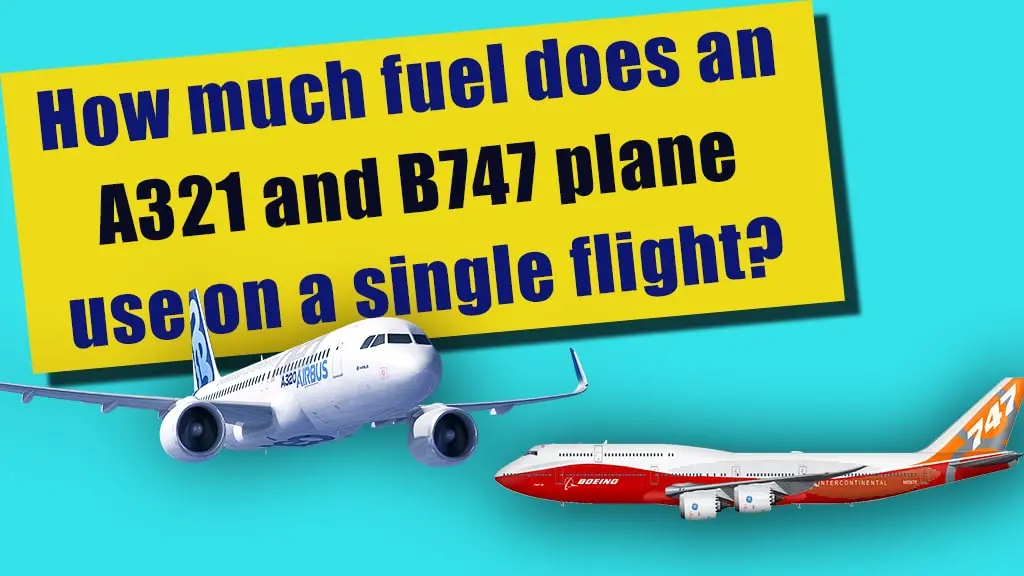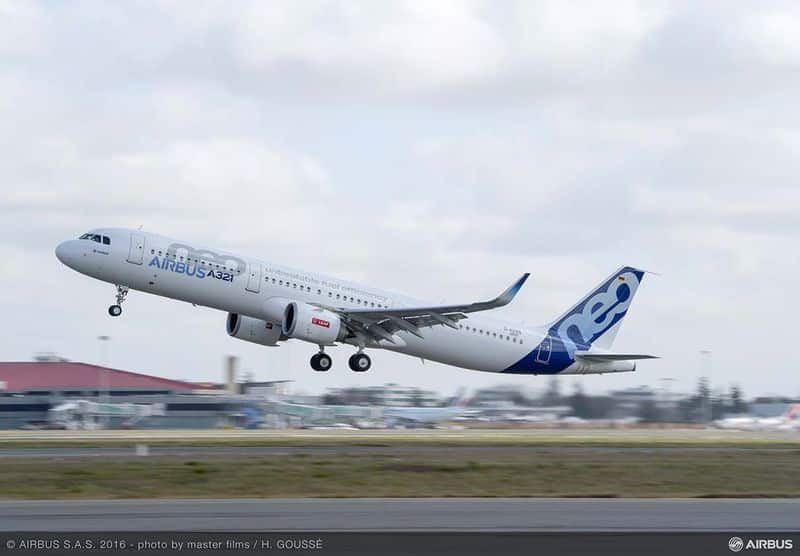Aerospace
How much fuel does an A321 and B747 plane use on a single flight?

- The Boeing 747 consumes approximately 4 liters per second, or 240 liters per minute and 14,400 liters per hour.
- A Boeing 747-400 can consume 187,200 liters of fuel during a 13-hour flight from Tokyo to New York City.
Power consumption of the Airbus A321neo
Airbus claims a 15% fuel saving and “over 95 percent airframe commonality with the current A320”. Its commonality helped to reduce delays associated with large changes.
About airbus : Airbus designs, manufactures and delivers industry-leading commercial aircraft, helicopters, military aircraft.
End of Queen of the Skies production, Boeing 747
Power consumption of the Boeing 747
| Category | Aircraft | Fuel |
| Helicopters | small piston engine | 6-16 gallons per hour |
| large turbine engine | 20-100 gallons per hour | |
| Cargo Planes | Boeing 747 | 3600 gallons per hour |
| Gyroplanes | Commander Elite 447 | 3 gallons per hour |
| Single Engine Turboprops | Piper M600; Cessna Denali | 39-60 gallons per hour |
| Light Jets | Cessna Citation CJ1+; Cessna Citation III | 132-241 gallons per hour |
| Mid-Size Jets | Learjet 60; Hawker 800XP | 215-291 gallons per hour |
| Super Midsize Jets | Dassault Falcon 50EX; Cessna Citation X | 287-347 gallons per hour |
| Long Range Jets | Dassault Falcon 8X; Gulfstream G650 | 347-453 gallons per hour |
| Heavy Jets | Dassault Falcon 900; Bombardier Challenger 603 | 303-329 gallons per hour |
| Taildraggers | Luscombe 8A | 4 gallons per hour |
| Light Sport Aircraft | Icon A5 | 5-10 gallons per hour |
| Fighter Jets | McDonnell Douglas (Boeing) F-15 Eagle | 385 gallons per minute |
| Supersonic Airliners | Concorde | 25,750 gallons per hour |

Aerospace
Boeing Transfers Rocket Stage to NASA, Paving Way for Human Moon Mission

Boeing has achieved a significant milestone by providing NASA with the second core stage of the Space Launch System (SLS) rocket.
This crucial component, crafted at NASA’s Michoud Assembly Facility (MAF), is set to propel the Artemis II crew into lunar orbit, marking humanity’s return to deep space after a 50-year hiatus.
The monumental Boeing-built rocket stage, the largest element of the Artemis II mission, will embark on a journey aboard the Pegasus barge, traveling 900 miles to NASA’s Kennedy Space Center.
Comparison of two legendary aircraft B777x vs B747 aircraft:Click here
Upon arrival, it will be meticulously integrated with other essential Artemis II components, including the upper stage, solid rocket boosters, and NASA’s Orion spacecraft within the iconic Vehicle Assembly Building. This intricate integration process is a vital step toward the eagerly anticipated Artemis II launch, slated for 2025.
“Boeing-built products helped land humankind on the moon in 1969, and we’re proud to continue that legacy through the Artemis generation,” remarked Dave Dutcher, vice president and program manager for Boeing’s SLS program. “Together, with NASA and our industry partners and suppliers, we are building the world’s most capable rocket and paving the way to deep space through America’s rocket factory in New Orleans.”
NASA, Lockheed Martin Reveal X-59 Quiet Supersonic Aircraft:Click here
The delivery of Core Stage 2 marks a significant achievement in the evolution of the SLS rocket. Towering over 200 feet and powered by four RS-25 engines, this core stage, coupled with two solid-fueled booster rockets, will generate a staggering 8.8 million pounds of thrust. This immense power is crucial to launching Artemis II and future missions into the vast expanse of space.
The SLS rocket stands unparalleled in its capability to transport both crew and substantial cargo to the moon and beyond in a single launch. Its extraordinary capacity will facilitate the delivery of human-rated spacecraft, habitats, and scientific missions to destinations including the moon and Mars, ushering in a new era of space exploration.
-

 Travel1 week ago
Travel1 week agoAir India to Expand US Operations with Three New Routes After a Decade
-

 Travel2 weeks ago
Travel2 weeks agoWhy We Should Avoid These Stamps in a Passport
-

 Airlines1 month ago
Airlines1 month agoInvestigations Reveal Fake Chinese Titanium in Boeing and Airbus Jets
-

 Tech4 weeks ago
Tech4 weeks agoChina’s CATL Plans 1,800-Mile Electric Plane Launch by 2027
-

 Airport3 days ago
Airport3 days agoTop 10 Largest Airports in the World by Size
-

 Aerospace4 weeks ago
Aerospace4 weeks agoChina’s Fighter Jets Turn Wings into Autonomous Drones
-

 Airlines4 days ago
Airlines4 days agoAir India Rolls Out A350s for Delhi-New York JFK and Newark Routes
-

 Defence3 weeks ago
Defence3 weeks agoBoeing Enhances Chinook with New Engines and Block II Upgrades at $96 Million








